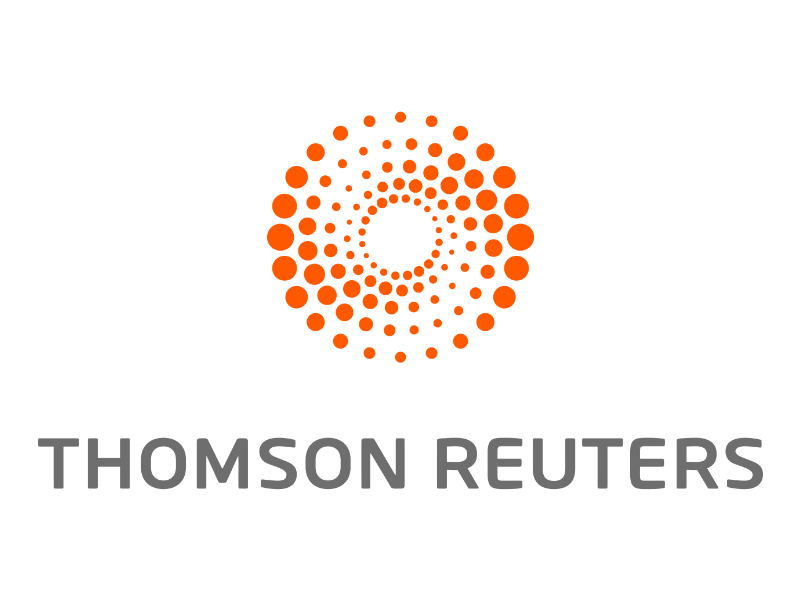Perfil bioquímico hepático en cuyes alimentados con la inclusión de harina de pisonay (Erythrina edulis)
Hepatic biochemical profile in guinea pigs fed with inclusion of pisonay (Erythrina edulis) meal

Esta obra está bajo una licencia internacional Creative Commons Atribución-NoComercial-CompartirIgual 4.0.
Mostrar biografía de los autores
Objetivo. Evaluar el efecto del porcentaje de inclusión y edad de rebrote de harina de hojas de Erythrina edulis en la respuesta de los metabolitos hepáticos de cuyes en el valle interandino de Abancay. Materiales y métodos. Se utilizó 10 cuyes machos mejorados asignados a cada dieta experimental que contenía 10, 20 y 30% de inclusión por 4, 8 y 12 meses de edad de rebrote y una dieta control con 20% de harina de alfalfa. A los 56 días se recolectaron muestras de sangre con finalidad de determinar los metabolitos hepáticos: proteína total, albumina, bilirrubina total, aminotransferasas, fosfatasa alcalina y gamma-glutamil transpeptidasa. Resultados. Los niveles séricos de la albumina, bilirrubina total, aminotransferasas y gamma-glutamil transpeptidasa fueron diferentes al grupo control (p<0.05). La proteína total y albumina (6.0 y 3.0 mg/dl) fueron mayores a los 12 meses en relación a ocho (5.8 y 2.8 mg/dl) y cuatro (5.6 y 2.8 mg/dl) meses de edad de rebrote; la bilirrubina total disminuyó hasta 0.1 mg/dl al incrementarse la edad de rebrote (p<0.05). La alanina y aspartato aminotransferasa disminuyeron por efecto de la edad de rebrote (54.0 a 34.5 UI/L; 80.7 a 56.9 UI/L, respectivamente) y el porcentaje de inclusión (46.7 a 35.8 UI/L; 75.5 a 57.7 UI/L, respectivamente) (p<0.05). La bilirrubina total disminuyó de 0.2 a 0.1 mg/dl al incrementarse el porcentaje de inclusión. Conclusiones. Los metabolitos hepáticos de cuyes mostraron variabilidad en la bilirrubina total y aminotransferasas por efecto de la inclusión y edad de rebrote de la harina de pisonay.
Visitas del artículo 402 | Visitas PDF
Descargas
- Meza CJ, Cabrera RP, Morán JJ, Cabrera CA, Mieles EM, Meza GA. Profitability and production of guinea pigs fed with forage shrubs tropical in rural area of Quevedo, Ecuador. Cienc Tecn UTEQ. 2018; 11(2):1–7. https://doi.org/10.18779/cyt.v11i2.231
- Choque H, Huaita A, Cárdenas LA, Ramos R. Effect of regrowth age the ruminal degradation of pisonay (Erythrina sp) in Andean valley of Abancay. J High Andean Res. 2018; 20(2):189–202. http://dx.doi.org/10.18271/ria.2018.363
- Cárdenas-Villanueva LA, Sarmiento-Casavilca VH, Ramos-Zuniga R. Productive and technological characteristics into guinea pig meat (Cavia porcellus) using pisonay based-diets (Erythrina sp). J High Andean Res. 2018; 20(4):451–460. https://doi.org/10.18271/ria.2018.422
- Guevara J, Díaz P, Bravo N, Vera M, Crisóstomo O, Barbachán H, et al. Use flour pajuro (Erythrina edulis) as food supplement in guinea pig – Lima. Rev Per Quím Ing Quím. 2013; 16(2):21–28. https://revistasinvestigacion.unmsm.edu.pe/index.php/quim/article/download/6590/5859/.
- Meza GA, Loor NJ, Sánchez AR, Avellaneda JH, Meza CJ, Vera DF, et al. Leaf meals and tropical shrubby foliage (Morus alba, Erythrina poeppigiana, Tithonia diversifolia and Hibiscus rosa-sinensis) in feeding guinea pigs (Cavia porcellus Linnaeus). Rev Med Vet Zoot. 2014; 61(3):258–269. http://dx.doi.org/10.15446/rfmvz.v61n3.46874
- Ramirez-Borda Y, Cárdenas-Villanueva LA, Ramos De la Riva VA, Gómez-Quispe OE. Serum concentration of aminotranferases in guinea pigs (Cavia porcellus) fed diets based on pisonay (Erythrina sp). Rev Investig Vet Perú. 2019; 30(3):1099–1108. http://dx.doi.org/10.15381/rivep.v30i3.16604
- Nnama T, Asomugha A, Asomugha R, Umeasalugo K, Mgbemena I. Phytochemical analysis and acute toxicological study of Erythrina senegalensis ethanolic leaf extract in Albino Wistar rats. Anat Physiol. 2016; 6(6):6–8. http://dx.doi.org/10.4172/2161-0940.1000248
- Herlina T, Madihah M, Deni D, Amien S. Subchronic toxicity of methanol extract from Erythrina variegata (Leguminosae) leaves on male Wistar rats (Rattus norvegicus). Molekul. 2017; 12(1):88–98. http://dx.doi.org/10.20884/1.jm.2017.12.1.349
- Birck MM, Tveden-Nyborg P, Lindblad MM, Lykkesfeldt J. Non-terminal blood sampling techniques in guinea pigs. J Vis Exp. 2014; 92:e51982. http://dx.doi.org/10.3791/51982
- Lawrence YA, Steiner JM. Laboratory evaluation of the liver. Vet Clin North Am Small Anim Pract. 2017; 47(3):539–553. http://dx.doi.org/10.1016/j.cvsm.2016.11.005
- Conceição A, Monteiro DM, Nunes R de S, Fakhouri R, Alves Rodrigues S, Teixeira-Silva F. Toxicidade aguda do extrato aquoso de folhas de Erythrina velutina em animais experimentais. Rev Bras Farmacogn. 2008; 18(Supl.):739–743. http://dx.doi.org/10.1590/s0102-695x2008000500018
- Cárdenas-Villanueva LA, Ramos-Zuñiga R, Huamán-Gamarra JL, Ramirez E. Efecto de la inclusión de harina de pisonay (Erythrina edulis) de tres edades de rebrote sobre las características productivas en cuyes (Cavia porcellus). Rev Investig Vet Perú. 2021; 32(6):e21702. https://doi.org/10.15381/rivep.v32i6.21702
- Mínguez C, Calvo A, Zeas VA, Sánchez D. A comparison of the growth performance, carcass traits, and behavior of guinea pigs reared in wire cages and floor pens for meat production. Meat Sci. 2019; 152(6):38–40. https://doi.org/10.1016/j.meatsci.2019.02.012
- Jurado-Gámez H, Cabrera-Lara EJ, Salazar JA. Comparison of two types of sacrifice and different ripening times on physico-chemical and microbiological variables of guinea pig (Cavia porcellus) meat. Rev Med Vet Zoot. 2016; 63(3):201–217. http://dx.doi.org/10.15446/rfmvz.v63n3.62741
- Genzer SC, Huynh T, Coleman-McCray JAD, Harmon JR, Welch SR, Spengler JR. Hematology and clinical chemistry reference intervals for inbred strain 13/N Guinea pigs (Cavia porcellus). J Am Assoc Lab Anim Sci. 2019; 58(3):293–303. http://dx.doi.org/10.30802/AALAS-JAALAS-18-000118
- Washington IM, Van Hoosier G. Clinical biochemistry and hematology. In: Suckow MA, Stevens KA, Wilson RP, editors. The Laboratory Rabbit, Guinea Pig, Hamster, and Other Rodents. Academic Press: Washington; 2012. http://dx.doi.org/10.1016/B978-0-12-380920-9.00003-1
- Paredes-López D, Robles-Huaynate R, Córdova-Chumbes O, De la Cruz-Paucar E. Effect of the Erythrina sp. leaves powder on biochemical profile, biological parameters and liver histopathology of Cavia porcellus. Sci Agropecu. 2017; 8(4):297–304. http://dx.doi.org/10.17268/sci.agropecu.2017.04.01
- Kumar R, Sharma R, Patil RD, Mal G, Kumar A, Patial V, et al. Sub-chronic toxicopathological study of lantadenes of Lantana camara weed in Guinea pigs. BMC Vet Res. 2018; 14(1):1–13. http://dx.doi.org/10.1186/s12917-018-1444-x
- Singh A, Bhat TK, Sharma OP. Clinical Biochemistry of Hepatotoxicity. J Clin Toxicol. 2011; 4(1):1–19. http://dx.doi.org/10.4172/2161-0495.s4-001
- Lu W, Wang J, Zhang HJ, Wu SG, Qi GH. Evaluation of Moringa oleifera leaf in laying hens: effects on laying performance, egg quality, plasma biochemistry and organ histopathological indices. Itali J Anim Sci. 2016; 15(4):658-665. https://doi.org/10.1080/1828051X.2016.1249967
- Hersey-Benner C. Protein, Total. In: Mayer J, Donnelly TM, editors. Clinical Veterinary Advisor: Birds and Exotic Pets. Academic Press: Washington; 2012. http://dx.doi.org/10.1016/B978-1-4160-3969-3.00372-3
- Titus D, Ahmed MU, Umaru IJ. Evaluation of Aqueous Stem Bark Extract of Guiera senegalensis on Wistar Rats. IJTCMR. 2022; 3(1):45-51 http://dx.doi.org/10.53811/ijtcmr.1060996
- Onu PN, Aniebo AO. Influence of Moringa oleifera leaf meal on the performance and blood chemistry of starter broilers. Int J Food Agric Vet Sci. 2011; 1(1):38–44. https://www.cibtech.org/J-FOOD-AGRI-VETERINARY-SCIENCES/PUBLICATIONS/2011/Vol%201%20No.%201/02-8-JFAV-Aneibo.pdf
- Ndou SP, Khanyile M, Chimonyo M. Growth performance and nutrition-related serum metabolites in growing pigs fed on Acacia Tortilis leaf meal. Livest Sci. 2015; 182:22–27. http://dx.doi.org/10.1016/j.livsci.2015.10.003
- McGill MR, Williams CD, Jaeschke H. Liver Toxicology. In: Abou-Donia MB, editor. Mammalian Toxicology. John Wiley & Sons; 2015. http://dx.doi.org/10.1002/9781118683484.ch20
- Ogunlana OO, Ogunlana OE, Adeneye AA, Udo-Chijioke OAC, Dare-Olipede TI, Olagunju JA, et al. Evaluation of the toxicological profile of the leaves and young twigs of Caesalpinia bonduc (Linn) roxb. Afr J Tradit Complement Altern Med. 2013; 10(6):504–512. http://dx.doi.org/10.4314/ajtcam.v10i6.20
- Jolhe DK, Mukhopadhayay SK, Som TL. Effect of Ampelopteris prolifera fern on clinical and haemato-biochemical parameters in guinea pigs. Indian J Vet Pathol. 2006; 30(1):36–38. http://www.indianjournals.com/ijor.Aspx?target=ijor:ijvp&volume=30&issue=1&article=009&type=fulltext
- Zhai S, Li M, Li M, Zhang X, Ye H, Lin Z, et al. Effect of dietary Moringa stem meal level on growth performance, slaughter performance and serum biochemical parameters in geese. J Anim Physiol Anim Nutr. 2020; 104(1):126–135. http://dx.doi.org/10.1111/jpn.13209
- Zaher HA, Alawaash SA, Tolba AM, Swelum AA, Abd El-Hack ME, Taha AE, et al. Impacts of Moringa oleifera foliage substituted for concentrate feed on growth, nutrient digestibility, hematological attributes, and blood minerals of growing goats under Abu Dhabi conditions. Sustain. 2020; 12(15):6096. http://dx.doi.org/10.3390/su12156096
- Ospina-Daza LA, Buitrago-Guillen ME, Vargas-Sánchez JE. Identification and degradation of mimosine, a toxic compound in Leucaena leucocephala (Lam.) de Wit. Pastos y Forrajes. 2017; 40(4):257–264. https://payfo.ihatuey.cu/index.php?journal=pasto&page=article&op=view&path%5B%5D=1994
- Nepomuceno D, Carvalho JC, Carvalho MG, Duarte R, Catunda F. Classes of secondary metabolites identified in three legume species. R Bras Zootec. 2013; 42(10):700–705. http://dx.doi.org/10.1590/S1516-35982013001000002
- Luckert C, Braeuning A, Lampen A, Hessel-Pras S. PXR: Structure-specific activation by hepatotoxic pyrrolizidine alkaloids. Chem Biol Interact. 2018; 288(2):38–48. http://dx.doi.org/10.1016/j.cbi.2018.04.017
- Verdecia DM, Herrera RS, Ramírez JL, Paumier M, Bodas R, Andrés S, et al. Erythrina variegata quality in the Cauto Valley, Cuba. Agroforest Syst. 2020; 94(4): 1209–1218. http://dx.doi.org/10.1007/s10457-019-00353-z
- Spittler AP, Afzali MF, Bork SB, Burton LH, Radakovich LB, Seebart CA, Moore AR, Santangelo KS. Age- and sex-associated differences in hematology and biochemistry parameters of Dunkin Hartley guinea pigs (Cavia porcellus). PLoS ONE. 2021; 16(7):e0253794. https://doi.org/10.1371/journal.pone.0253794
- Parimoo HA, Sharma R, Patil RD, Sharma OP, Kumar P, Kumar N. Efecto hepatoprotector del extracto de hoja de Ginkgo biloba sobre la hepatotoxicidad inducida por lantadenes en cobayos. Toxicon. 2014; 81(5):1–12. https://doi.org/10.1016/j.toxicon.2014.01.013
- Salihu SB. Comparative effect of three different energy sources on hematology and serum biochemistry of rabbits. J Anim Heal. 2020; 2(1):17–38. https://www.iprjb.org/journals/index.php/JAH/article/download/1164/1282/3628
- Garba Y, Adeola EA. Haematological and serum biochemical profile of growing Yankasa ram lambs fed diets containing graded levels of sesame residue. EJFOOD. 2020; 2(5):1–4. http://dx.doi.org/10.24018/ejfood.2020.2.5.133
- Lanca AJ, Israel Y. Histochemical demonstration of sinusoidal γ-glutamyltransferase activity by substrate protection fixation: Comparative studies in rat and guinea pig liver. Hepatology. 1991; 14(5):857–863. http://dx.doi.org/10.1002/hep.1840140518























